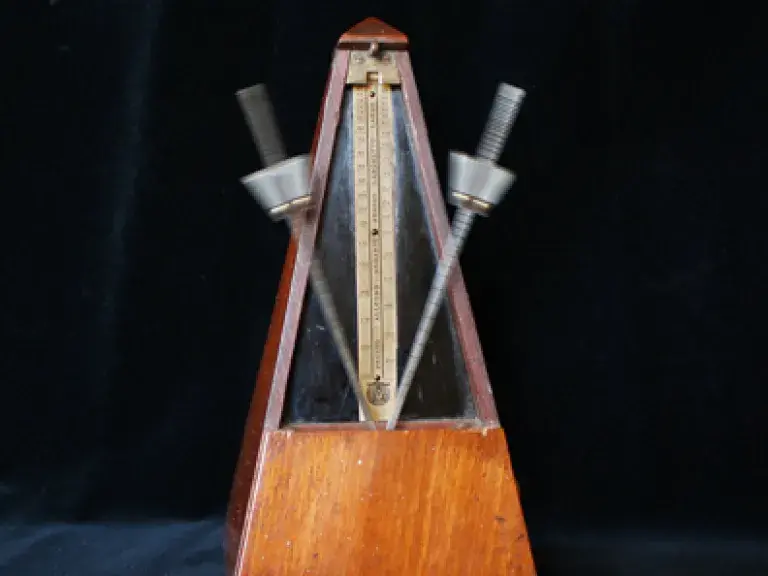
Venezuelan composer Albert Grau's "Magnificat-Gloria" is a challenge throughout: a Latin text, unusual harmonies (in the early going, the altos, tenors, and basses sing continuous fourths against each other), and lots of dissonant intra-part divisi.
But the aspect of the piece that's the most vexing—the aspect most in need of careful study and rigorous woodshedding—is its abundance of asymmetrical meter, often mixed with other asymmetrical meter. One noteworthy passage begins with a bar in 9/8 time, followed by a bar in 7/8, a bar in 5/8, two more in 7/8, another in 5/8, followed by a 6/8, a 7/8, a 5/8, another 6/8, and finally three in 3/8—that's 73 beats spread out over 13 bars of rhythmic mayhem.
When done right, the passage is sweeping and dramatic, but getting it right is a very time-consuming (and very humbling) experience.
Why should this be so? After all, it's only a matter of counting, just like any other passage of music. Why should "1-2-3-4-5, 1-2-3, 1-2-3-4" be any more difficult than "1-2-3-4, 1-2-3-4"?
The reason may be that we North Americans generally don't have a lot of experience with so-called "unbalanced" meters—and even less with mixed meter. Virtually all of the music we Western music-types learn and perform is written in a time signature that has a 2, 3, or 4 on the top (representing the number of beats in one measure) and a 2, 4, or 8 on the bottom (representing the type of note that equals one beat). As a consequence, our brains find music that is rhythmically symmetrical to be comfortable and reassuring. Asymmetric meters (e.g., 5/4 or 7/8), on the other hand, being much less familiar to us, can be problematic (and anxiety-provoking). And maybe not just to us, but also to our Western-conditioned audiences.
Our brains become conditioned, starting at a very early age, to assimilate the rhythms, genres, and styles of music we listen to frequently, and to use the resultant structures (called "schemas") as filters for the types of music we encounter throughout our lifetimes. These internal schemas help us feel connected with styles of music that are familiar to us and, similarly, can make us feel disconnected with styles with which we have little prior experience.
Rhythmic asymmetry, though curious and troubling to the Western mind, is actually quite common in the music of other cultures. As noted on Liz Mellish and Nick Green's Balkan folklore website, http://www.eliznik.co.uk, uneven musical rhythms are found widely throughout Europe, especially in Scandinavian and southeastern European folk music and dances. The rhythms in these songs use beats of unequal length, the long beat being about one and a half times the length of the short beat.
The good news is that contemporary neurological research has shown that the brain is remarkably adaptable to learning new things, a concept that was widely disbelieved half a century ago. The bad news (for some of us, anyway) is that the brain's ability to adapt isn't as pronounced in middle age as it is in its youth. So if you really want to develop your facility to sing in asymmetric and/or mixed meter, make sure you got lots of practice early on in life.

